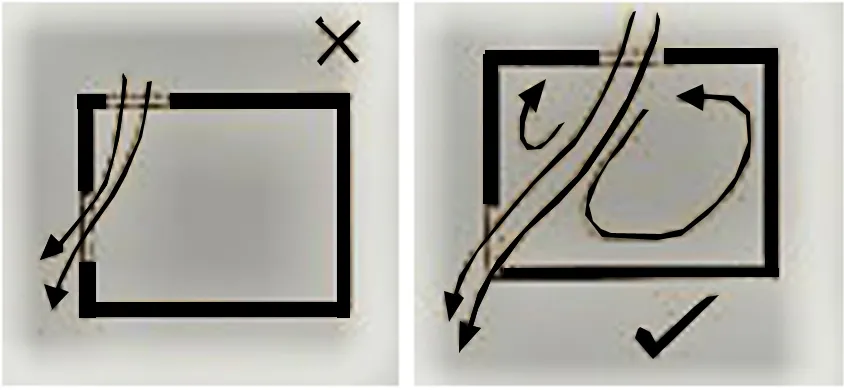If you want to know about the theory of color or cinemas design or vastu for internal planning of house, please click the link.
Natural ventilation refers to the process of using natural airflow to provide fresh air into a building and remove stale air. It is a sustainable and energy-efficient way of ventilating indoor spaces, which can help improve indoor air quality and create a more comfortable living environment.
Natural ventilation can be achieved through a range of techniques, including opening windows, using passive ventilation systems, and using the stack effect. The stack effect is a natural phenomenon where warm air rises and creates a pressure difference that draws in fresh air from outside.
1) Natural ventilation and air movement concept
Natural Ventilation is caused by naturally produced pressure difference due to wind outside the building.

It (Driving force) drives the ventilation. The driving force can be wind.
Example: Stack ventilation.
It (Ventilation principle) is used to exploit the natural driving forces to ventilate space.
Example: Cross ventilation.
It (Characteristic element) is used to realize the natural ventilation.
Example: Wind Tower, Wind Scoops.
2) Why we need Ventilation?
- To provide an acceptable indoor air Quality, which essentially is based on the supply of fresh air and the removal or dilution of indoor pollution concentration.
- To provide Thermal Comfort

3) Types of Natural Ventilation – (i)

i) Wind driven Ventilation
ii) Stack Ventilation
i) Wind driven Ventilation
Windward: The side of an object facing the wind.
Leeward: The side of a sheltered from the wind.

- Wind hits the Windward wall causing a direct +ve pressure.
- Wind moves around the building leaves the Leeward wall with a -ve pressure.

ii) Stack Ventilation

- It is a kind of Passive ventilation that use air pressure differences due to height to pull air through the building.
- Stack ventilation uses temperature differences to move air. Hot air rises because it is lower pressure.
Warm air, which is less dense in the building rises, the cooler air is sucked from the openings below.
- Inlets which supply air should low in the room.
- Outlets should be located across the room and at high level.

Air supply through louvers and extracted through chimneys.
Wind not needed.
4) Types of Natural Ventilation – (ii)

i) Cross Ventilation
ii) Position of openings
iii) Size of openings
i) Cross Ventilation
When placing ventilation openings, inlets and outlets to optimize the path air follows through the building. Windows or vents on opposite sides of the building give natural breezes a pathway through the structure. This is called cross-ventilation.

ii) Position of openings

Windows should be staggered rather than aligned

Partitions should not be placed near windows causing an abrupt change of wind direction.

Windows on adjacent walls should preferably not be so placed as to cause an abrupt change of wind direction.
iii) Size of openings

Outlet should be preferably larger than inlet.

Openings should be placed on two external walls with the door on one internal wall.
5) Types of Natural Ventilation – (iii)

i) Wind Scoop
ii) Wind Tower
iii) Earth air tunnel
The design of a building can greatly affect natural ventilation and air movement. Factors such as building orientation, window size and placement, and the use of shading devices can all impact airflow and air quality within a space. Understanding these concepts and incorporating them into building design can help create healthier and more sustainable indoor environments.